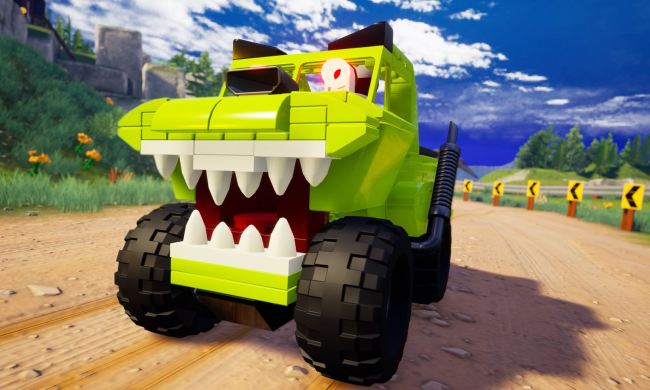Thanks to the selling power of nostalgia and the popularity of retro titles, remastered and remade games have been big business for the last decade. Many of us, myself included, grew up experiencing games before the days of 4K, high frame rates, and ray tracing, so it’s always fun to see what our favorite classics look like with a modern coat of paint.
Some of them, like the recent Diablo II: Resurrected, are quite good and take the opportunity to bring a few of their gameplay systems into the current day. Others, like Pokémon Brilliant Diamond and Shining Pearl, are mediocre or polarizing, bringing their old issues with them in the name of preserving an authentic experience. We try not to talk about remasters like the Grand Theft Auto Trilogy.
I recently played through the campaign of Halo 2 Anniversary, the 2014 remaster of Halo 2, with my partner. Soon after we beat it, I watched him play through Diablo II: Resurrected‘s campaign. Both games allow you to swap between the original game’s visuals and the remastered visuals with the push of a button. It was something I’d never thought about while playing a remastered game, but shortly into our Anniversary playthrough, we found ourselves swapping back and forth constantly to compare levels, enemies, and sounds. He did the same while playing Resurrected.
Switching between versions of games so quickly and seamlessly gave us a dramatic look at how design, art, and sound trends have changed over the past few decades. It’s a feature I’d never thought to ask for, but now I wish every remastered game had it.
An Anniversary with the Arbiter
Halo 2 Anniversary‘s remaster is more dramatic than most. In addition to refreshed visuals, it boasts updated music and cinematic cutscenes. The way to swap between the original game and Anniversary is easy: Simply press the tilde key. While the cutscenes lag a little during the change, the transition is seamless overall. We did this on almost every one of the game’s levels and cutscenes simply out of curiosity. I’ve never played the original, and I wanted to see just how different things were in the misty past of 2004.
They were extremely different, it turns out. Besides the obvious visual updates, the aspect that struck me the most was the change in music. Halo 2‘s original music reminded me of late ’90s and early 2000s rock with its chugging guitars and rough riffs. Anniversary‘s music was just as rockin’, but it felt a lot more modern in the way it was mixed and presented. The remaster’s music sounds much more cinematic and closer to something you might see in a movie, which is representative of the wider cinematic trend and blurring of media lines in gaming today.


Bringing Anniversary closer to a theatrical experience was also the goal of the updated cutscenes, which still hold up in 2021. The original cutscenes are done in-engine, but the remaster’s are all cinematic. Swapping between the two gave us some unintentional laughs as we went from the sleek, music-backed set pieces of Anniversary to the almost silent, low-poly scenes of the original. It was a great way to see how camera movement, the use of sound, and animation had changed in a single decade.
It was interesting to note that not everything looked better in Anniversary. My partner and I agreed that the original game’s water textures were superior, which is important as much of the game takes place over or around water. The lighting in the original was better in some spots as well, mostly due to a starker contrast between colors. The UI didn’t change between the two games, which was probably to prevent confusion. In an attempt to smooth things over, Anniversary looks a little muddied in some places. I wouldn’t have been able to see these changes — and gauge what each version of the game did best — without the ability to quickly and seamlessly swap through them.
Dancing with Diablo
After we finished Anniversary (and I immediately bought Halo 3 through The Master Chief Collection), my partner started a run of Diablo II: Resurrected. While Diablo has never been my Blizzard game of choice, he and Diablo II go way back. As someone so invested in the world of Tristram, I was curious about what he would think of the remaster.
Both the original and Resurrected contain an incredible amount of visual detail. The original game certainly has a lot of late-’90s PC game charm, even for someone who hasn’t played a lot of those titles. While Resurrected‘s cutscenes aren’t new, the remastered versions look fantastic, breathing new life into old characters and scenes. While the new fields, forests, and jungles look fantastic, the immense amount of detail actually means that some interactable elements of the environment are harder to see in the remaster than in Diablo II. The remastered environments are much more high-resolution and detailed, but that doesn’t make them better.
It raises an interesting question: At what point should a game break away from its inspiration for the sake of clarity or ease of use?


At the same time, my partner noticed visual elements he’d never seen before, like the helmets that follow the player’s movement when they reach Hell. All of these comparisons were incredibly easy to see through the single-button press that brings the player from 2000 to 2021 and back again. The stark difference between the visual design philosophy of isometric environments two decades ago and today is especially present in Resurrected, which understands yet doesn’t update some of the original’s issues. Swapping between the two is like watching 20 years’ worth of design fly by in an instant.
Swapping back and forth between two games during each of these playthroughs enriched our experience more than almost anything else. Being able to talk about different design philosophies, both visual and gameplay-wise, was a lot of fun and brought more depth to the experience. It made me think about the warring goals of remasters. Are they primarily to polish an existing game for a modern audience, but leave it largely the same in terms of systems? Or are they meant to transform the experience into something fresh and modern, but at the risk of destroying what made the original great? Is it possible to bridge the gap between these two goals without losing the soul — and the audience — of the original title? It’s a lot to consider, and I don’t envy any game designer or company that has to make that choice.
I wish more games would include an option to swap back and forth from the original. There are design lessons for both players and burgeoning game designers to learn from each version of these classic games, and the ease at which modern gamers can switch between the two versions is a feature that should be lauded. Remasters that include their original titles remind us of where we came from, tell the story of technical and design evolution within gaming, and deliver a healthy dose of nostalgia and laughs — intended or otherwise.
After all, life was simpler back when Master Chief was just a polygonal blob.



